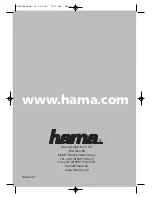
58
Alloy Multiplier
Enter the multiplier that matches the metallurgy of the electrodes connected to the
sensor. Refer to the chart below.
Cycle Time
Select the length of the cycle time to be used. The longer cycle times provide more
accurate readings but decrease the speed of response.
Range
Select the expected range of the corrosion rate.
Units
Select the units of measure for the corrosion.
Name
The name used to identify the sensor may be changed.
Type
Select the type of sensor to be connected.
Alloy Multipliers
These values are based on using standard corrosion electrodes with 5 cm2 surface area.
Material
Multiplier
UNS Code
Carbon Steel
1.00
K03005
Copper 110 ETP
2.00
C11000
Admiralty Brass
1.67
C44300
Aluminum 1100
0.94
A91100
Aluminum 2024
0.88
A92024
Phosphorized Admiralty
Brass
1.68
C44500
Aluminum Silicon Bronze
1.48
C64200
Aluminum Brass
1.62
C68700
Copper/Nickel 90/10
1.80
C70610
Copper/Nickel 70/30
1.50
C71500
AISI 4130 Alloy Steel
1.00
G41300
Lead
2.57
L50045
Monel 400 Nickel
1.13
N04400
Monel K500 Nickel
1.04
N05500
Hastelloy C22
0.85
N06022
Inconel 600 Nickel
0.95
N06600
Incoloy Alloy 20
0.98
N08020
Incoloy Alloy 800
0.89
N08800
Incoloy Alloy 825
0.88
N08825
Hastelloy C276
0.86
N10276
Titanium Grade 2
0.75
R50400
304 Stainless Steel
0.89
S30400
316 Stainless Steel
0.90
S31600
2205 Duplex Stainless Steel 0.89
S31803
2507 Super Duplex
Stainless Steel
0.88
S32750
Zinc
1.29
Z17001
5.2.9
Corrosion Imbalance Input
ONLY AVAILABLE IF A CORROSION INPUT BOARD IS INSTALLED
Input Details
The details for this type of input include the current corrosion imbalance value, alarms, status, current stage in the
















































